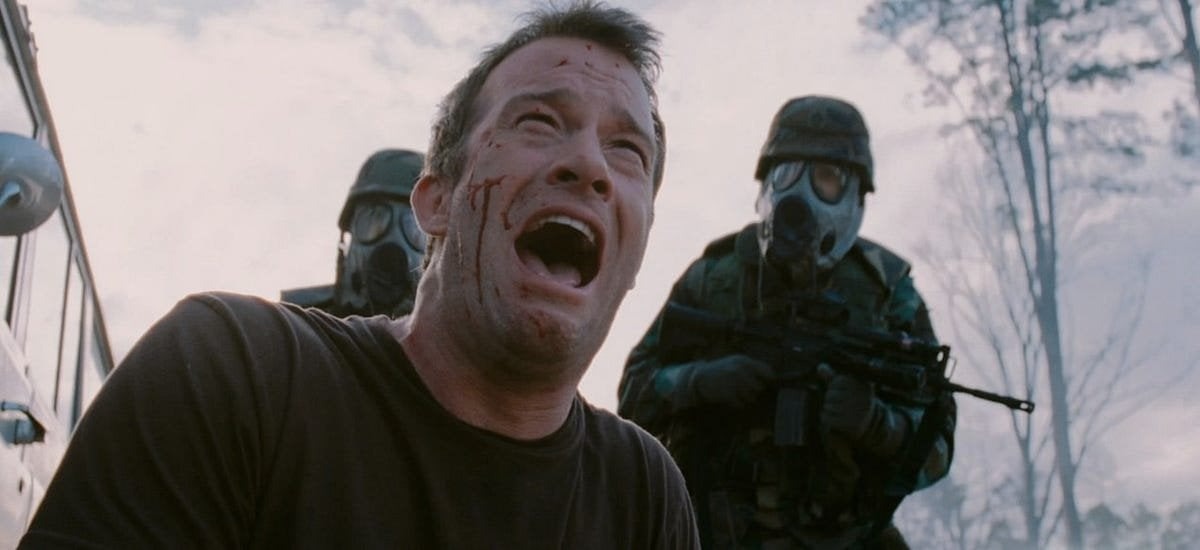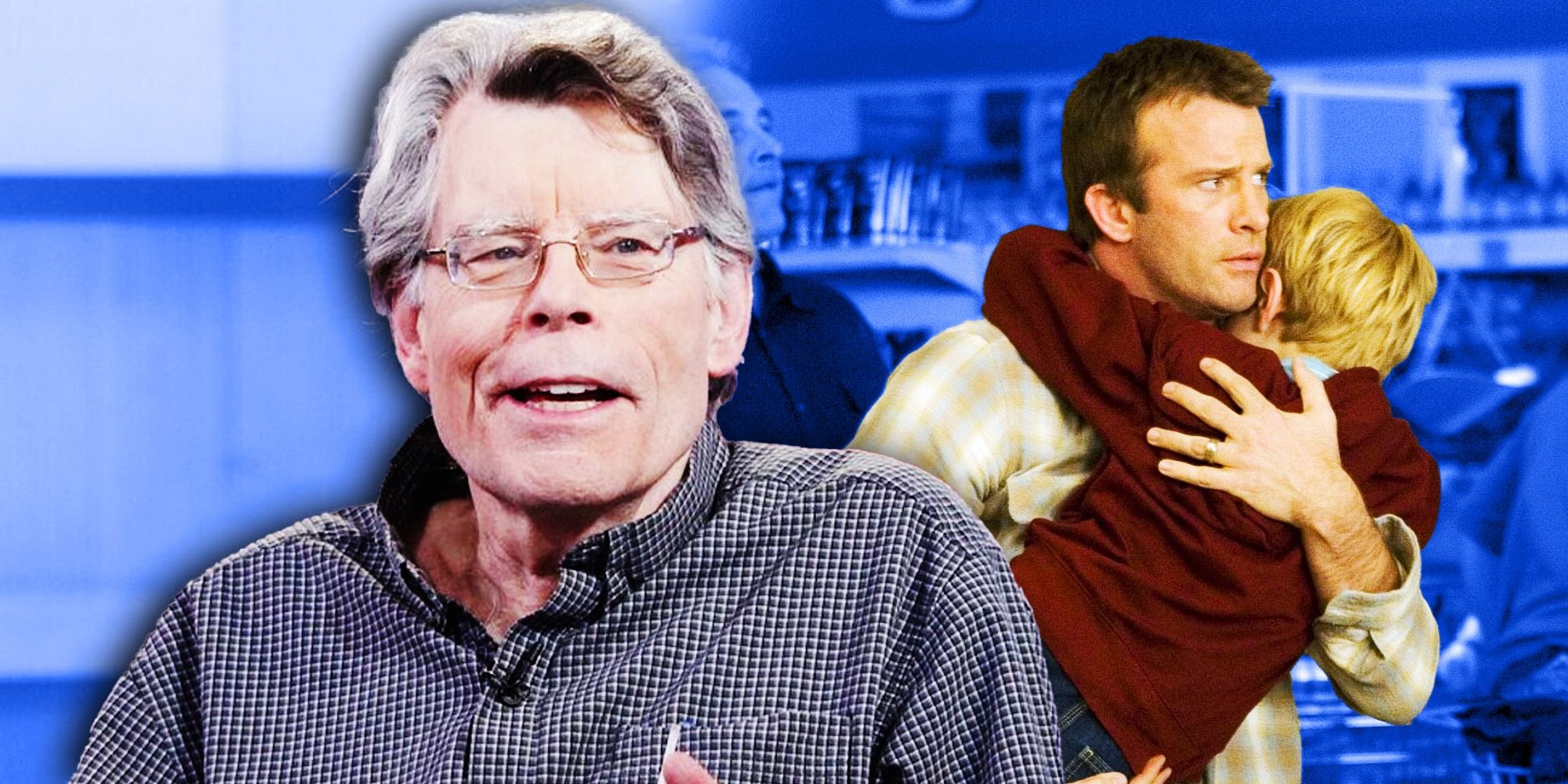At first glance, the grocery store in The Mist gave the impression of being a solid refuge — just like the mall in George Romero’s Dawn of the Dead. With enough food and drinks to last for a long while and enough space for everyone to keep to themselves, it seemed like a good place to wait out the strange events.
The mood and behavior of people in the store changed with time. Being cooped up can affect people’s minds, and those inside the store began to show it, especially as things got worse. Mrs. Carmody, who presented herself as a religious figure, soon gained control over a group of followers.

She pushed the idea that sacrifices were the only way to stop the horrors. This disturbing turn was even more haunting in the black-and-white version of the film. She eventually targeted Billy, David’s son, claiming he must be given up.
Thankfully, store assistant Ollie stepped in with a gun and killed Carmody before things got worse. That moment made it obvious that staying in the store would only lead to more danger, so David and those with him decided to leave and face the unknown outside.
The Mist’s Monsters Explained
By choosing to leave the store, David and his companions exposed themselves to the strange and dangerous creatures moving through the mist. Most of the group succeeded in reaching David’s truck and left the area, though that only brought brief relief.
As the mist kept closing in, neither Stephen King’s story nor the film made it clear where the mist or its monsters came from. Still, both versions pointed to a secret military experiment, Project Arrowhead, as the likely cause.
Although the final cut of the film removed the scene, Darabont’s original script included a prologue that confirmed this theory. It described how a power surge caused a lightning strike, which led to a malfunction in a dimensional gate.
As a result, the creatures from another dimension spilled into the town, bringing chaos along with the mist. Though this scene never made it to the screen, the implication remained strong throughout the movie.
Why David Shot His Friends & Son In The Mist’s Ending
Once David found his wife’s body at home, the group continued driving until their vehicle ran out of fuel. Then, in a tense, silent moment, the adults in the car seemed to reach a shared decision — they would not wait for the creatures to reach them.
David used his gun to end their lives, including his own son’s, but didn’t have a bullet left for himself. At first glance, it seemed like a rash move, but with a deeper look, the decision becomes more understandable considering the fear they faced.
From what we had seen in the film, the monsters were brutal and didn’t spare their victims — tearing them apart, mutilating them, or devouring them alive. That kind of death is horrifying to even imagine, and given the circumstances, David and his group chose what felt like the only escape left to them.
The Mist’s Ending Weirdly Proved Mrs. Carmody’s Right
After David ended the lives of his friends and son, he stepped out of the car, ready to face whatever came next. But then, just moments later, the mist began to fade, and military troops appeared, eliminating the creatures and taking control.
That sudden rescue broke David completely, leaving him devastated and regretful that he hadn’t waited a little longer. There’s a disturbing theory about what this moment could mean. Throughout the film, Mrs. Carmody kept saying the mist was a punishment from God and that only human sacrifices would bring salvation.
Her final demand was the life of Billy. The timing of the mist clearing — right after Billy’s death — raised the terrifying idea that Carmody may have been right. It’s not a settled issue, but it certainly forces viewers to look at the ending from a different angle.
How The Mist Movie Ending Is Different From Stephen King’s Book
Frank Darabont’s film closely followed Stephen King’s novella, but he chose a completely different ending. In the book, instead of running out of fuel, David and the group stop somewhere to rest for the night. While scanning radio stations, they pick up what seems like a faint broadcast suggesting safety in Hartford.
That’s where the story ends — not with a definite conclusion, but with a little bit of hope. Darabont’s film offered something far darker. Despite this change, King himself admired what Darabont did with the ending and even wished he had come up with it first.
Why The Mist Ending Is So Controversial
While Stephen King stood by Darabont’s version of the ending, a large part of the audience didn’t agree with it. Many viewers found it hard to accept that David, who had tried so hard to protect his son and others, would suddenly choose to take their lives.
Some also felt the timing of the military’s arrival was far too convenient — almost like a cruel trick played on the viewers. The ending left people arguing whether it was there just to shock or if it truly made sense based on everything that came before.
Either way, it sparked a lot of reactions and made The Mist one of those films people continued to talk about long after watching.
What The Mist TV Series Did Differently
The television series based on The Mist went in an entirely different direction. The characters, locations, and even the cause of the mist were all changed. David Drayton, who was the main character in the movie and book, doesn’t appear at all.
Instead, the series follows Kevin Copeland, a character created solely for the show. When the mist arrives, Kevin is in a police station, then moves to a church, and finally ends up in a mall, where most of the story happens — replacing the grocery store from the film.
The series also introduced a new focus: a mystery surrounding Kevin’s daughter, Alex, who was raped the night before the mist came. Some believed this crime might be tied to the mist’s appearance. Kevin, unlike David, came across as less sympathetic.
By the time he and Alex escape in a car, he purposely drives into the mall to let the mist in, killing everyone inside. The Four Horsemen of the Apocalypse even appear, dragging away a priest, but none of this is properly explained — and with the series canceled after just one season, it never will be.
The Mist Ending Shows Why The Movie Succeeds Where The TV Adaptation Failed
What made The Mist movie work is how it focused more on human reactions under pressure than on the monsters themselves. Although the creatures were horrifying, the real threat was how people behaved when pushed to the edge.
This idea was also explored in other horror stories like The Walking Dead, especially in the early seasons when Darabont was in charge. David’s choice at the end was born out of fear, and that’s what made it hit so hard.

On the other hand, the TV series spent too much time trying to figure out where the mist and monsters came from, instead of focusing on how people coped. The fear of the unknown was powerful enough without needing everything explained.
Characters like Mrs. Carmody showed just how dangerous human beliefs and actions could become in desperate times, and that’s the part the movie delivered strongly, unlike the series.
Frank Darabont Refused To Change The Ending
Frank Darabont gave in on some parts of The Mist movie — for instance, he agreed to release it in color when the studio didn’t accept his plan for a black-and-white version. Though he later got to release his preferred version on home video, there was one part of the film he never agreed to adjust: the ending.
Before moving forward with the project, Darabont made sure he had Stephen King’s support for the version of the ending he had in mind. King and Darabont had worked together before, and King trusted him enough to approve the change.
Even when the studio offered to double the movie’s budget if Darabont softened the ending, he refused. They even pushed for alternate endings, including one where the last thing shown is Billy’s face before the screen cuts to black with the sound of the final gunshot.
Still, Darabont stood his ground, and the movie was released the way he intended. That decision is one of the reasons the film left such a lasting impression.



